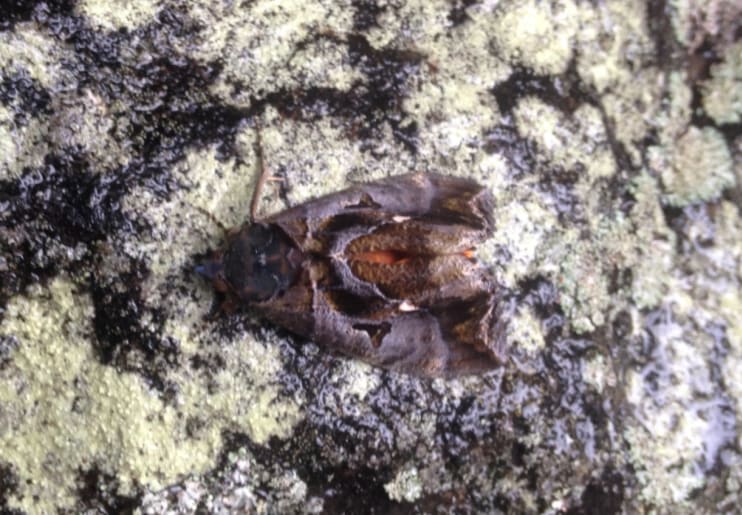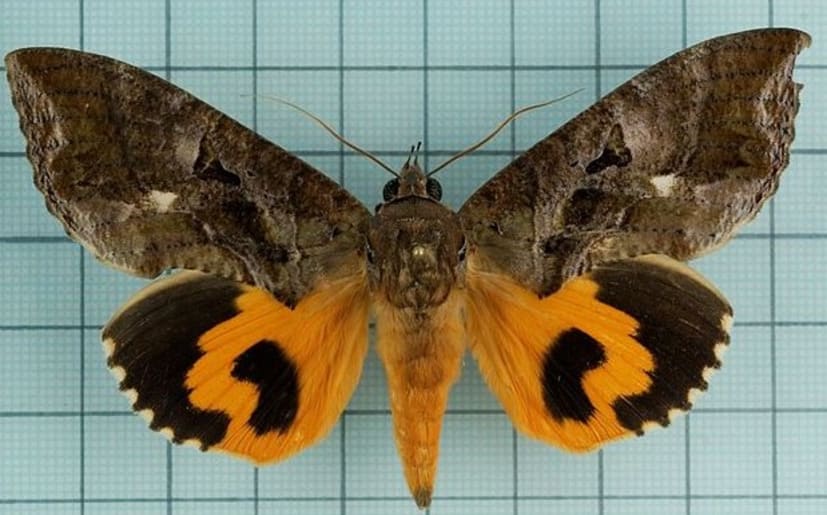With Helensburgh entomologist Dr Chris Reid
This month I was going to write about leeches, because it’s so wet, but I couldn’t find any (OK, I didn’t look very hard). Later.
Instead, a couple of photos of moths rescued from the feet of commuters at the Helensburgh Railway Station, where they were sitting after flying in at night.
The first is pretty plain, but even though it stands out like a sore thumb on the platform surface, it still manages to look fairly convincingly like a dead leaf. It is a geometrid – a large family of moths (>1500 Australian species), distinguished by having looper caterpillars and adult moths that often hold their wings like butterflies.
Furthermore, unlike most of the larger moths, geometrids have their ears on the abdomen. What are the ears of a geometrid moth? They are two cavities at the base of the abdomen concealed by the long silky scales. Moths fly around at night and their main predators are bats and bats use sonar to locate moths, so moths have evolved ears to detect sonar and then use other organs to either jam the sonar or send an ‘I’m toxic’ signal in return (see Youtube link).
The looper caterpillar of geometrids walks like a leech, because it is missing the middle false legs found on other caterpillars (all abdominal legs on a caterpillar are false legs as they are just swellings of the skin, not properly jointed hard legs like the adults). Losing its middle legs may help the caterpillar to pretend to be a twig but I wonder if in Australia it might also have helped to pretend to be an inedible leech. By the way I haven’t named this moth to species because I don’t know what it is. It’s not in my copy of Moths of Australia by Ian Common. There are no identification guides, but Coffs Harbour Butterfly House runs a useful website.
The other moth I found on the station is much larger but also cryptic, pretending to be a rolled-up leaf. However, this one is modestly covering up – underneath the hind wings are deep yellow. While a beautiful moth, the occurrence of this species locally might send alarm bells to our local orchards.
This is a fruit-piercing moth (species Eudocima phalonia), a major orchard pest, particularly of citrus. The adults fly to ripening fruit at night, pierce the skin with their modified mouthparts (a sharp stabbing syringe rather than a rolled-up tongue) and drink the juice. When doing this they introduce bacteria into the fruit and from this tiny hole the whole fruit becomes rotten.
Commonly the fruit fall off the tree just before harvest. Spraying the tree doesn’t help at all, as the caterpillar of this moth doesn’t feed on the fruit tree – it feeds on vines in nearby wetter forest. So this is a difficult moth to control and is a major problem for the fruit industry.
Fruit-piercing moths are generally tropical so I was surprised to find this one down here (we are 34 degrees south).
Another example of the impact of climate change?













